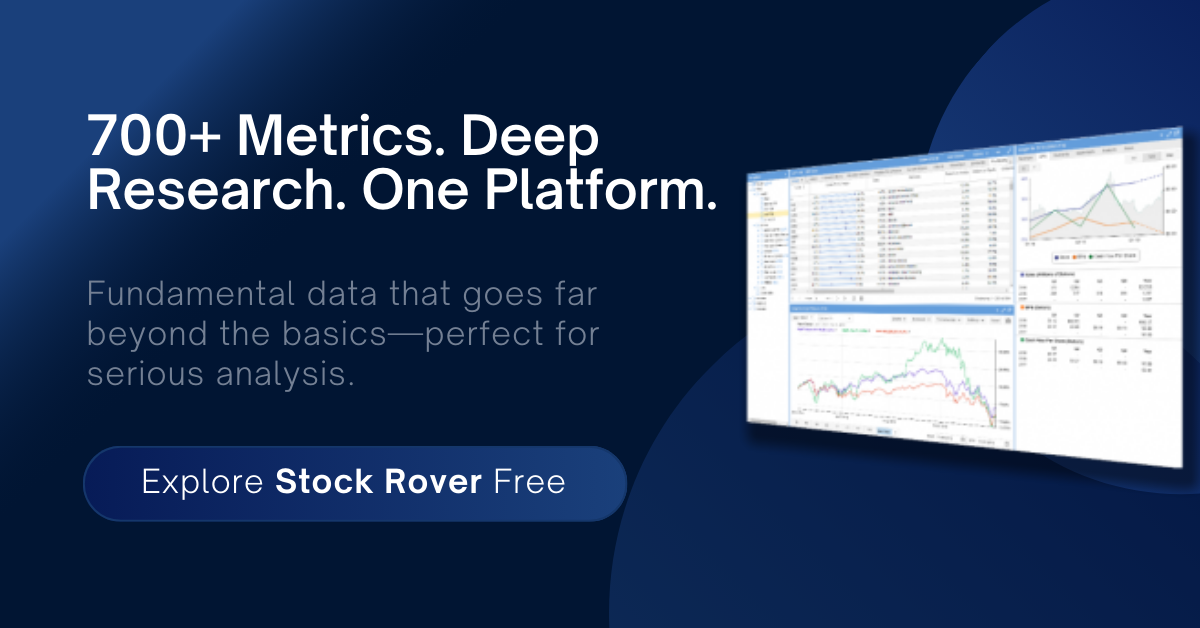
Value investing is much simpler with asset plays where you are not interested in the operating business, you just evaluate the balance sheet. For most other investments, you will need to consider earnings, quality of earnings and earnings growth.
You already know the power of margin of safety, intrinsic value, and contrarian patience. But what if I told you that many of the biggest mispricings, and portfolio drawdowns, can be avoided or exploited with one overlooked tool?
That tool is cash flow forecasting.
This isn’t about spreadsheets for CFOs. This is about giving yourself a strategic edge: seeing ahead when others are reacting. In this article, you’ll learn how forecasting future cash flows can help you sharpen valuations, anticipate financial inflection points, and avoid value traps hiding in plain sight.
Why Historical Cash Flow Isn’t Enough
Most screeners and stock writeups regurgitate trailing twelve-month (TTM) data. But investing is about the future. You don’t get paid for what a company did. You get rewarded for what it will do.
This is especially true if your valuations are based on earnings and growth. This is where cash flow forecasting separates signal from noise.
Historical cash flow shows what a company did. Forecasting helps you assess what it can do. For value investors, this forward visibility bridges the gap between cheap and truly undervalued. Without it, you’re fumbling in the dark.
Forecasting Strengthens Your Intrinsic Value Estimates
If you estimate intrinsic value using a DCF (discounted cash flow) model or owner’s earnings framework, your assumptions are only as good as your inputs. And your inputs are forecasts.
I generally do not like to guess the future, but if that becomes necessary, cash flow forecasting becomes your most trusted ally.
Projecting forward operating cash flows, capital expenditures, and changes in working capital gives you a clearer view of future owner’s earnings. That helps you define a valuation range with more confidence. Better forecasts mean narrower valuation bands, more conviction, and fewer mistakes.
I don’t care how cheap the stock looks on P/E or P/B, if I can’t see a credible future stream of cash flows, it’s not investable. I need the path, not just the price.
It is about understanding the business at its most intimate. It is also about understanding how the managers in the business think and act.
How to Forecast Cash Flow: A Practical Framework
Forecasting is not about precision. It’s about informed approximation. Here’s how to build a usable forecast:
- Start with historical operating cash flow: Look at the past 3-5 years. Is it consistent, cyclical, or lumpy? Smooth earnings often hide erratic cash flows.
- Normalize it: Remove one-time items, adjust for working capital swings, and use a sustainable level of capex (not just last year’s).
- Build a base case: Use conservative assumptions for revenue growth, margins, and capex. Forecast 3-5 years forward.
- Layer in scenarios: Add upside/downside cases to reflect how sensitive the cash flows are to different inputs.
- Check against reality: Compare your forecasts to management guidance, analyst estimates, and industry trends.
If the company has cyclicality or exposure to macro factors, incorporate those into your assumptions. Use common sense before Excel skills. Forecasting is an art, not a formula.
In some ways this is armchair analysis, that involves playing multiple scenarios in your mind and testing whether it breaks your valuation thesis. You are unlikely to come out with a very specific forecast, and even if you do, it is not likely that it will be accurate. But you will understand what possibly could occur, and pick a baseline that you can work with.
Spot the Red Flags Early (Before the Market Does)
One of the most powerful uses of forecasting is in avoiding losers.
Before the stock drops, declining future cash flow is often the earliest clue. A company may report flat revenue while operating cash flow falls. That’s a red flag. It signals margin compression, poor working capital discipline, or worse.
Forecasts help you spot dividend cuts, cash shortfalls, and unsustainable business models. For small caps, this insight can be the difference between holding a 10-bagger and catching a falling knife.
Sometime ago, Leggett and Platt announced a major dividend cut after being a dividend aristocrat for many years. For most dividend investors, this came as a surprise. For astute investors, Leggett and Platt was on a slow decline for some time and this was very predictable.
A Secret Weapon for Dividend and Income Strategies
If you’re investing for income, through dividends, REITs, BDCs, or your own version of the Income Factory, cash flow forecasting becomes indispensable.
Forecast payout ratios against forward free cash flow, not past net income. For CEFs and BDCs, estimate distributable cash flow under stress scenarios. If the forecast looks fragile, that yield may come with a capital loss.
This is how you separate dependable income from disaster. Especially in high-yield environments where yield-chasers get punished.
Tying It to the Bigger Picture: Risk Management and Opportunity Timing
Forecasting doesn’t just tell you what to buy. It tells you when to act.
You can time your entry when forward cash flows inflect upward. You can avoid early entry in a turnaround where the forecast still shows negative operating leverage.
It also helps manage portfolio risk. When you have visibility into forward liquidity, reinvestment capacity, or debt maturities, you allocate smarter. You sidestep traps. You act with clarity.
Use This Edge or Compete Blindfolded
You’re not just investing in financial statements, you’re allocating real capital based on future expectations. Ignoring cash flow forecasting is like driving without headlights at night.
Start simple. Build a forecast. Update it over time. Use it to test assumptions, time your investments, and sharpen your conviction.
You don’t need to be perfect. You just need to be better than the crowd. At the very least you will gain insights into how the business really operates, and that will put you ahead of 95% of the investors.

Shailesh Kumar, MBA is the founder of Astute Investor’s Calculus, where he shares high-conviction small-cap value ideas, stock reports, and investing strategies.
His work has been featured in the New York Times and profiled on Wikipedia. He previously ran Value Stock Guide, one of the earliest value investing platforms online.
Subscribe to the Inner Circle to access premium stock reports and strategy insights.
Featured in:








